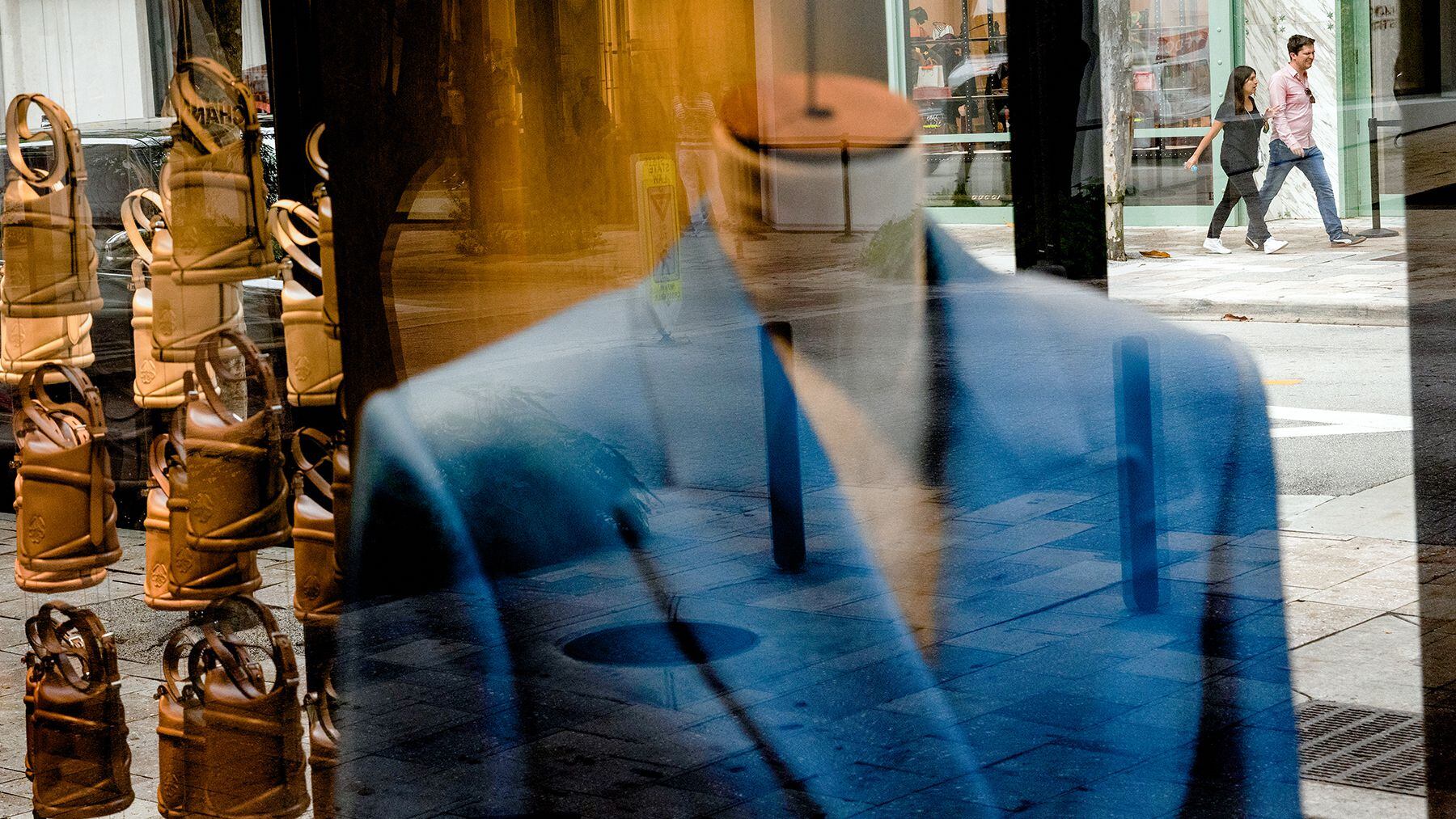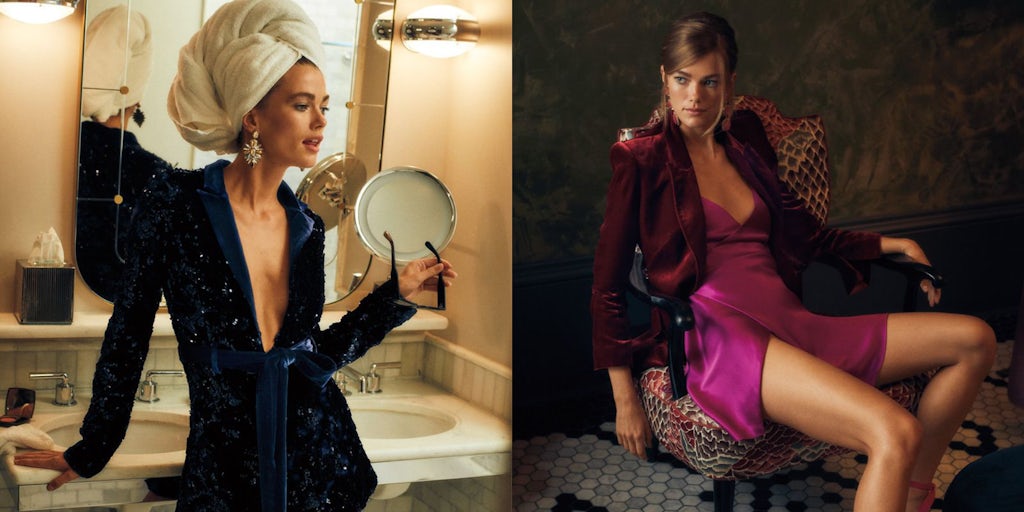What Happened to Crypto’s Luxury Shoppers
These days, a leather minidress isn’t on Meltem Demirors’ shopping list.
A crypto investor and chief strategy officer of CoinShares, a digital asset management firm, Demirors said her fashion spending changed as the crypto market has suffered through its downturn. The industry has endured a prolonged slump in currency values and the spectacular collapses of pillars such as the Terra stablecoin and crypto exchange FTX. Demirors was among those to feel the FTX fallout.
“I think pretty much everyone in the industry did,” she said. “But you know, I’m on a one-woman mission to make this industry stylish. That hasn’t stopped.”
Demirors hasn’t given up her luxury brands — she’s particularly partial to Prada — but her priority is on clothes she’ll wear in her day-to-day life: fewer leather minidresses, more understated pieces from labels like The Row.
She’s also adjusting to the industry’s more subdued mood. Travelling and attending events — and looking good while you’re there — are part of the culture in crypto. The parties and conferences are still happening, but they’re perhaps less exuberant than they used to be.
“So maybe instead I buy something different that’s more versatile, more comfortable, maybe a little bit more situationally appropriate for the current environment,” she said.
In late 2021, the crypto industry was on a high. The price of Bitcoin topped $60,000, NFTs were booming and crypto insiders were flush with funds that they directed toward purchases of items like luxury watches and high-end fashion. Fashion brands sought their piece of the action, taking cryptocurrencies as payment, releasing NFT collections and flocking to cities such as Miami, a popular crypto hub, where they staged runway shows and opened stores. That December, analysts at Jefferies estimated crypto wealth may have driven as much as a quarter of luxury sales in Miami over the preceding year.
A large amount of that wealth has since been wiped out. Currencies like Bitcoin and Ether are presently worth about one-third of their 2021 peaks. A number of firms in the industry have slashed their workforces.
Exactly what the effect has been on luxury sales in the US is difficult to pin down. Prices on the secondary market for certain high-end watches coveted by crypto investors have fallen off their early 2022 highs. But a sizable share of crypto’s riches was concentrated in a small number of hands to begin with, and plenty of investors held other assets they could fall back on. Even as the industry has faltered, the US luxury market remained strong throughout 2022. (It has recently begun to slow as middle-income Americans rein in their purchases in the face of inflation and rising interest rates.)
What’s notable is that spending by crypto shoppers isn’t quite as conspicuous as it once was. While some are certainly still buying, for others, how much they’re dropping on fashion and what they’re purchasing has changed.
Crypto’s Style Shift
Tough times haven’t curtailed spending entirely.
“My clients, they’re still movin’ and groovin’,” said Donté McGuine, a stylist with a number of crypto clients and co-founder of the brand Wahine with actor and model Evan Mock. “The jets are still jetting and the yachts are still yachting.”
But even McGuine’s clients have changed what they’re buying. Generally speaking, they’re shopping a little smarter, McGuine said. One client who travels frequently has moved away from buying runway pieces, for example, and is focused on simpler items that still pop but can also be packed easily in a suitcase.
“For an industry where consumption is part of the job, some of that has changed,” said Raihan Anwar, director of community at Blockchain Creative Labs and head of community and culture for Friends With Benefits, a crypto group centred on crypto’s intersection with culture. “There has been an overall shift to being a little more tactful, a little more utilitarian.”
Anwar has noticed a growing emphasis on connoisseurship, with watches being an example. Crypto shoppers still want pieces from Rolex and Patek Philippe, he said, but they’re also “talking more about the Omegas of the world” — excellent timepieces that just don’t have quite the same trophy status. They’re looking for specific models and vintage pieces, too, rather than just buying a hyped watch like a Nautilus or Royal Oak. In terms of clothing, some of his friends have gotten into buying vintage Yohji Yamamoto and Cav Empt, the label co-founded by Japanese streetwear pioneer Sk8thing.
Demirors said she’s observed a fashion shift away from loud prints and logos to items that are more discrete. There’s less Gucci and more brands like Loro Piana and Zegna for men, or Bottega Veneta and Margiela for women. (Nobody is touching Balenciaga after its strongly criticised campaign featuring children alongside sexually suggestive toys, she noted.) Women and men alike are buying Issey Miyake’s Pleats Please.
“In the bull market there was a lot of indiscriminate buying,” she said. In today’s bear market, however, shoppers are starting to develop their own personal style and emphasising items that, as Demirors put it, are a little more “refined” and “adult.”
Effects of the Crypto Crash
On his last US trip in November, Flavio Cereda, an analyst at Jefferies who was involved in the firm’s previous estimates on crypto’s luxury spending, said some brands were already seeing softer sales, but that probably had more to do with “their own weakening brand heat more than crypto crash,” he wrote in an email. Top performers like Louis Vuitton, Dior and Chanel were still doing quite well.
In the Miami Design District, home to a number of luxury stores that receive crypto customers, momentum at the shops hasn’t slowed, according to Danielle Merollo, the district’s director of personal shopping. Morello said in a statement that recent store openings by several new luxury brands have drawn a steady influx of personal shopping clients “who go well beyond the cryptocurrency wealth consumers.”
Of course, that it’s harder to spot crypto’s effects at all is arguably noteworthy.
“In late 2021 the impact of crypto in the US was obvious — this is not so much the case today,” Cereda wrote in his email.
The secondhand market for high-end watches is one arena where insiders say there has been a visible impact. By May of last year, values of some timepieces were down 30 percent to 40 percent, according to Jeffery Fowler, chief executive of Hodinkee, a popular watch resource and marketplace.
While Fowler said there were other factors at play that make it difficult to draw a direct line of cause and effect to the crypto crash, like weakness in the broader stock market and plummeting market values for tech firms, he believes crypto’s troubles were a key part of the mix.
“I think the correlation holds,” he said.
Chrono24, a watch marketplace that’s based in Germany but now sees its highest number of sales in the US, also pointed to a “direct impact” from crypto’s decline, its co-CEO and founder, Tim Stracke, said in a statement.
The YOLO Lifestyle
Even in a downturn, however, crypto shoppers might be more willing to spend their disposable income on discretionary items like luxury products and expensive fashion.
The industry has “historically showed a strong ‘YOLO’ (You Only Live Once) attitude,” Federica Levato, a senior partner and the EMEA leader for fashion and luxury at Bain & Company, wrote in an email.
It has tended to attract young talent willing to trade high risk for potentially high rewards right now, not necessarily a job with a long horizon that allows them to save for retirement. McGuine also pointed to a “YOLO lifestyle” as a factor in how his clients shop. They don’t generally have responsibilities such as kids or a mortgage and are focused on enjoying the present.
If the crypto market does eventually pick up again, it seems likely luxury purchases will rise again with it. Fowler said Hodinkee saw prices of hyped timepieces stabilising after the crypto prices hit bottom and levelled out last year.
Demirors said she feels 100 percent certain the industry will rebound and spending will continue. That spending will just look different than it used to.

:quality(70):focal(1113x633:1123x643)/cloudfront-eu-central-1.images.arcpublishing.com/businessoffashion/RJSGZRVKVNCTRKVBF3FPZMN6P4.jpg)




